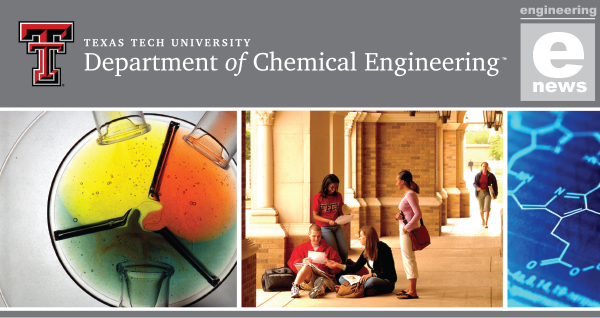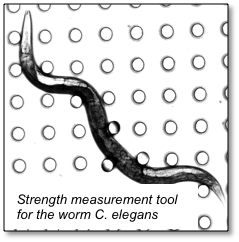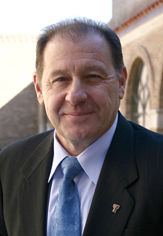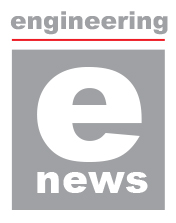
Faculty News
Dr. Vanapalli is taking development leave during the 2016/17 academic year to more deeply study the neurobiology, muscle biology and genetics of the worm, C. elegans, and to develop new tools to probe the neuronal circuits, muscle activity, and signaling in this organism. Dr. Vanapalli has become interested in these worms over the past three years and has obtained a number of grants to study them using microfluidic and other tools. For example, he and his collaborators developed a miniaturized device to measure the muscle strength of worms. The device contains small chambers that fit on a microscope slide and have tiny rubber pillars inside dangling from the top to just above the bottom. As the worms move, they push against the pillars, and the strength of the worms is then determined by how far the pillars moved, similar to using Hooke's law for a spring. Vanapalli is even sending the worms and strength measuring devices to the International Space Station, with the aid of a grant from NASA, to study muscle atrophy that occurs with astronauts in space. His other projects on C. elegans involve identifying genes and drugs that promote exercise benefits for improving the quality of life in elderly and cancer patients. His developmental leave will foster learning more about the biology of the worms at the Department of Biological Sciences at the Tata Institute of Fundamental Research in Mumbai, India.


Dean Al Sacco, Jr., was elected to the board of directors of the American Institute of Chemical Engineers (AIChE). His leadership in the society will focus on inspiring students to become engineers and scientists, increasing inclusivity and gender equity in the profession, and promoting the teaching and practice of a culture of safety in universities, including both laboratory and process safety. His service, which will take a global outlook across the organization in these three areas, is anticipated to help AIChE become a leader in STEM (growing the pipeline), diversity and inclusivity (growing the pipeline and attracting the best peoples) and safety.

Research is the cornerstone of graduate education and securing funding to perform research is an integral part of a faculty member's job. Twelve of our fifteen faculty received new funding in the past year, but a special highlight on the young faculty who obtained their first grants is apropos:
Dr. Nurxat Nuraje received a new grant from the American Chemical Society - Petroleum Research Fund to study the self assembly of polybetaine and its effect on paraffin inhibition. The goal is to develop a new class of polybetainic paraffin inhibitors, establish a new understanding on the inhibition of paraffin crystallization, and provide guidelines for designing paraffin inhibitors for crude oils.

Dr. Wei Li received a High Impact/High Risk Research Award from the Cancer Research Prevention Research Institute of Texas to develop a multi-modular microchip for investigating exosome-mediated drug expulsion in cancer cells. This approach is expected to dramatically increase the sensitivity and accuracy of drug resistance tests while reducing the assay time, sample preparation and cost.

Dr. Jeremy Marston received a grant from Inovio Pharmaceuticals to develop a comprehensive model of the hydrodynamics of the liquid jets used in needle-free injection. In particular, determining the limits of operability in terms of liquid physical properties is a key driver. Dr. Marston's team will also be looking at the impingement and penetration stage when the jet first hits its target. The research will provide input into device performance and hopefully facilitate making needle-free injection more commonplace, thereby eliminating needles and the associated phobias.

Dr. Gregory McKenna has been awarded the DFG Mercator Fellowship, which facilitates long-term project-based cooperation with German researchers. Dr. McKenna will be performing soft matter research with collaborators at the Universities of Freiburg and Strasbourg. The work involves mentoring students in the two institutions as they extend the TTU bubble inflation methodology for making nanomechanical, viscoleastic measurements on ultrathin polymer films. The goal of the project is to develop an interferometric method of measurement that builds on the original TTU method and provides the advantage of making measurements on large arrays of bubbles that is not possible with the atomic force microscopy adaptation developed at TTU.

Edward E. Whitacre Jr. College of Engineering
-
Address
100 Engineering Center Box 43103 Lubbock, Texas 79409-3103 -
Phone
806.742.3451 -
Email
webmaster.coe@ttu.edu


